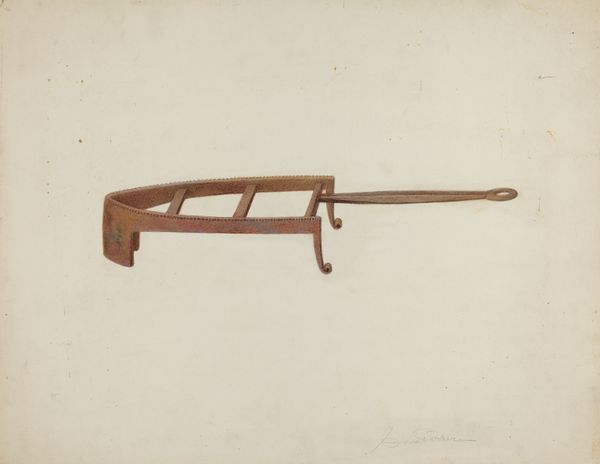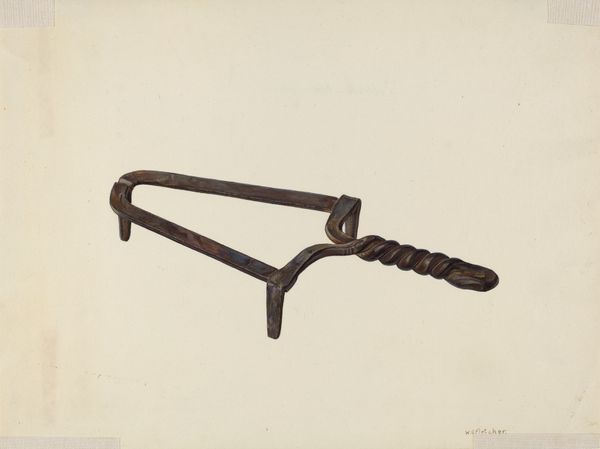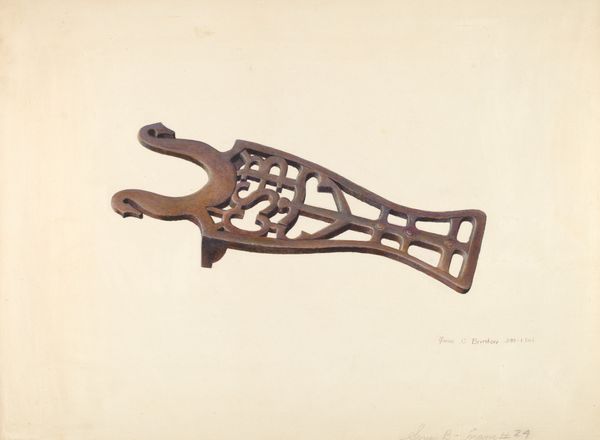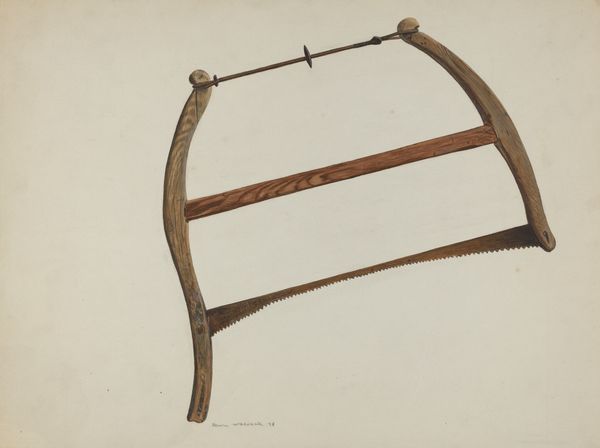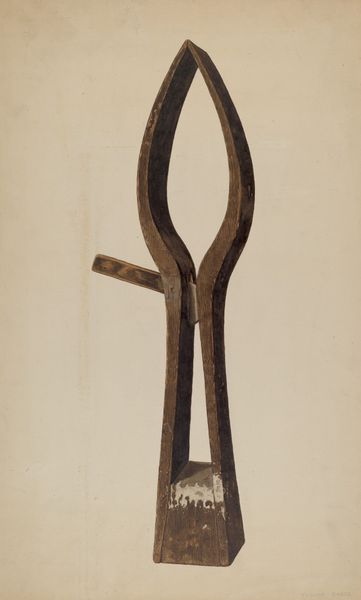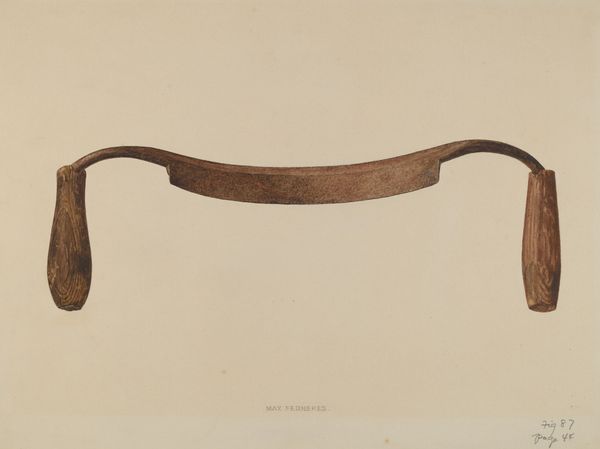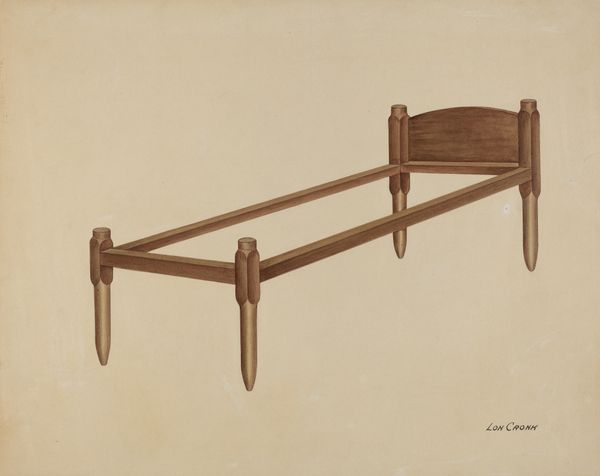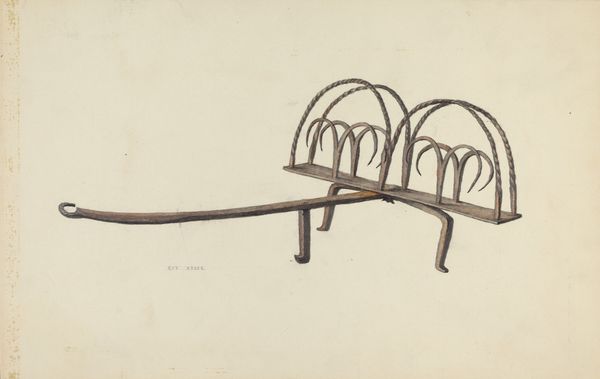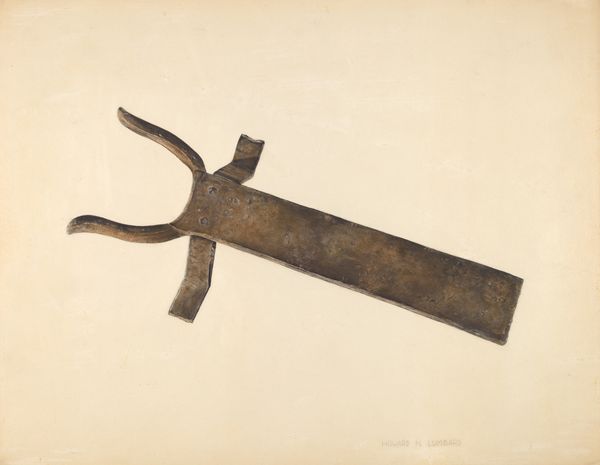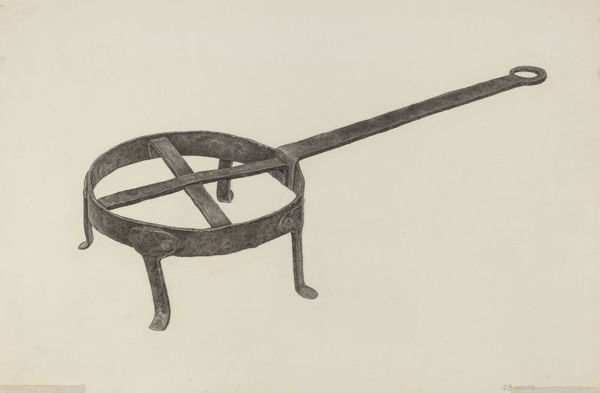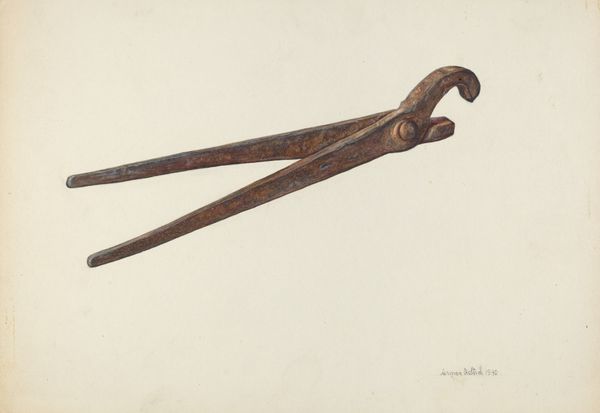
drawing, watercolor, pencil
#
pencil drawn
#
drawing
#
watercolor
#
pencil drawing
#
pencil
#
watercolour illustration
#
realism
Dimensions: overall: 26.2 x 37.3 cm (10 5/16 x 14 11/16 in.)
Copyright: National Gallery of Art: CC0 1.0
Editor: Here we have Donald Harding’s "Flat Iron Holder," made around 1940, using pencil and watercolor. It's so simple, almost a technical drawing, but with a real delicacy of line. What's your take on this seemingly humble object, curator? Curator: It speaks volumes about the socio-economic realities of the time. This wasn't just a practical tool; it was central to the maintenance of respectability and domestic order. The flat iron itself represents a specific labor, largely done by women, and its holder signifies a need for safety, organization and pride within a household. Editor: Pride? How so? It just seems… utilitarian. Curator: Think about it. During the mid-20th century, maintaining a neat appearance, even in working-class homes, carried significant weight. Cleanliness and tidiness were performative acts, signalling social mobility and belonging. This simple holder ensured the hot iron wouldn’t scorch surfaces. Its presence suggests attention to detail, care, and the woman's role as homemaker in particular. Editor: That's fascinating! So even everyday objects, rendered in this delicate manner, can tell stories about class and gender roles? Curator: Precisely. It's also intriguing that this object was preserved as a drawing, perhaps suggesting an aspiration beyond the domestic sphere – documenting it for posterity within some kind of official archiving effort.. What do *you* make of its almost technical style of representation? Editor: I suppose I hadn’t considered how powerful even a seemingly insignificant piece of domestic equipment can be. Thank you; you have totally changed how I look at everyday things! Curator: That's wonderful to hear! It proves how objects of daily life, especially in times of transition, are not so plain in their telling and visual representation.
Comments
No comments
Be the first to comment and join the conversation on the ultimate creative platform.
